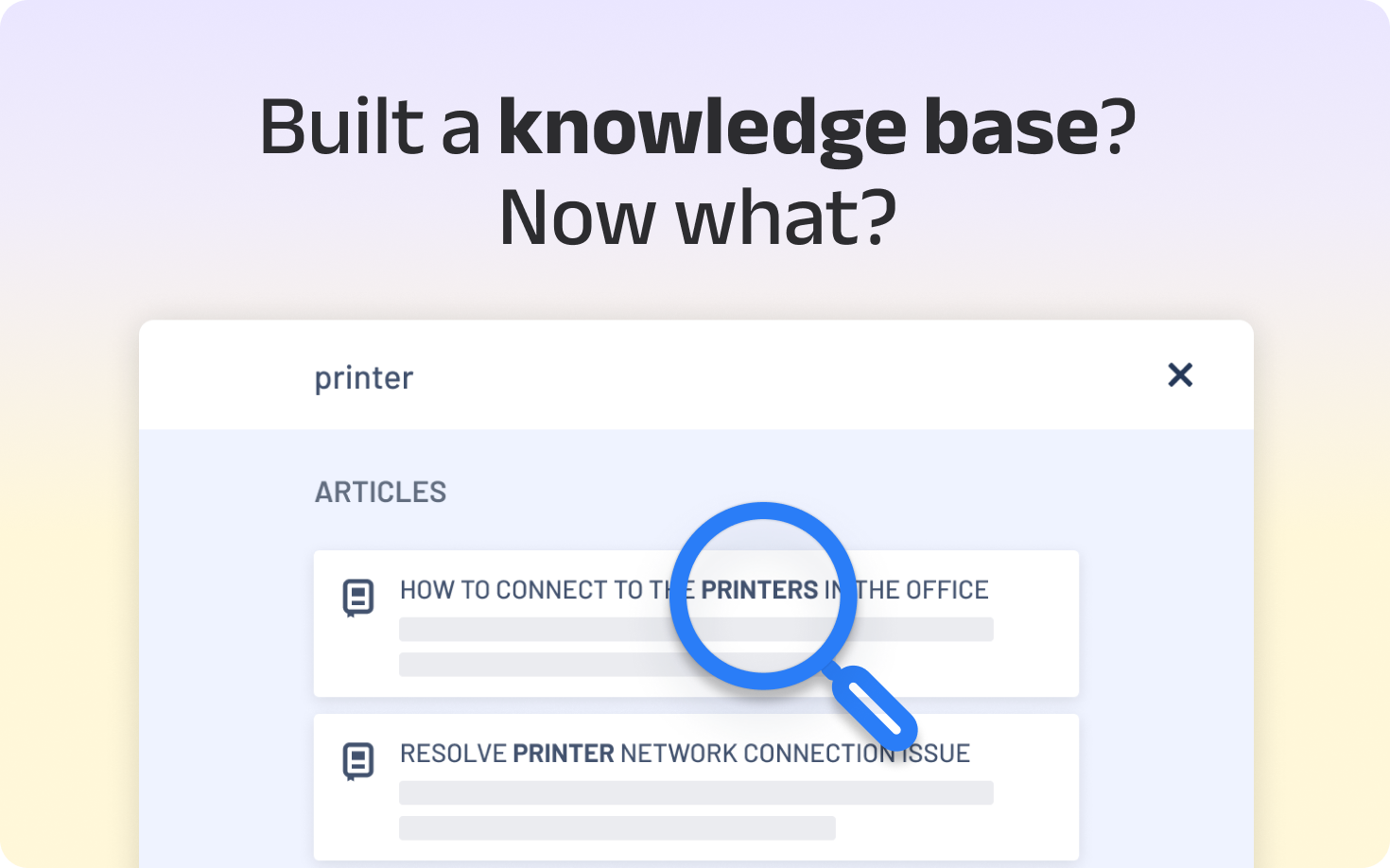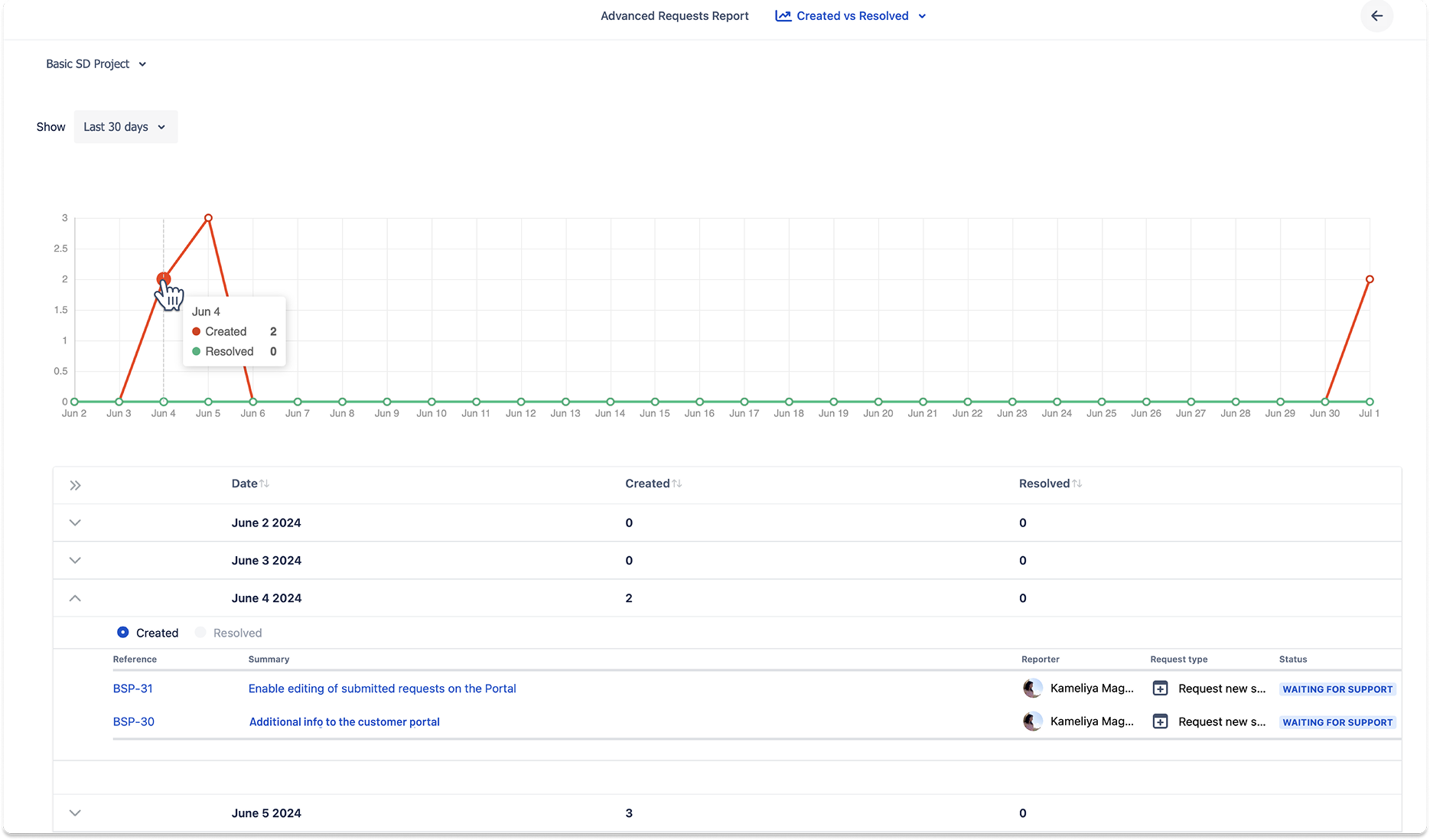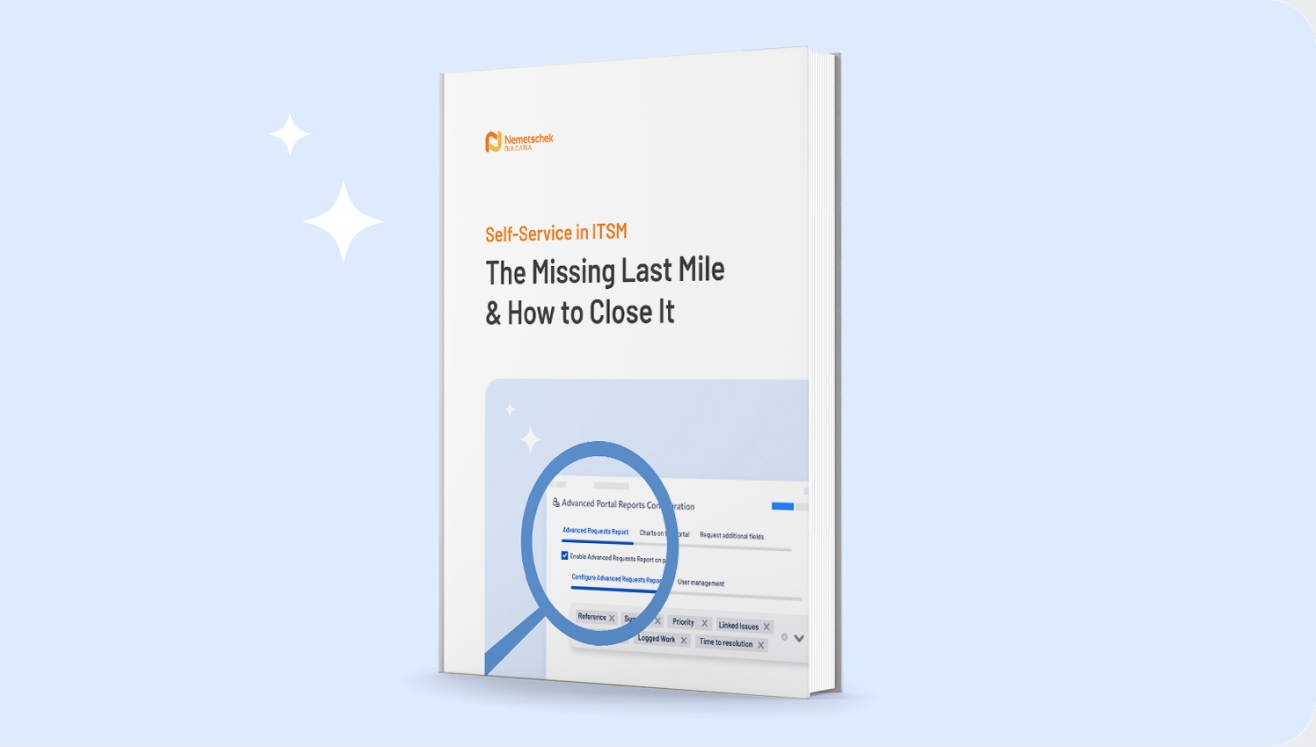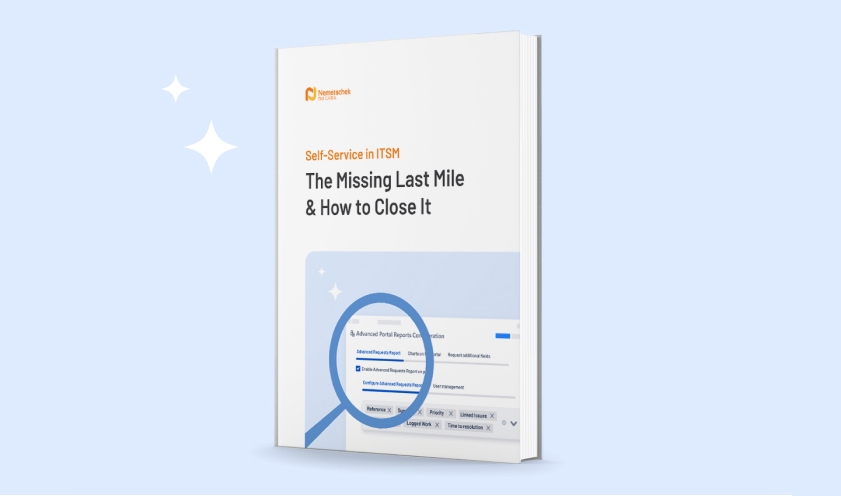

Stay Tuned
You want to find the right answers, fast.


You want to find the right answers, fast.

You've invested time and resources into building a knowledge base. It deflects tickets and reduces agent workload, but portal users still submit tickets, and inefficiencies persist. Why?
Because knowledge alone doesn't deliver complete self-service. Without comprehensive visibility into the operational details that matter, portal users and their teams lack the transparency needed for true efficiency.
Your Jira Service Management (JSM) knowledge base achieves 20%–40% case deflection, which is a solid win. But if you're reading this, adding more articles isn't moving the needle on operational efficiency and team productivity anymore.
The problem isn't with deflection, it's with what happens after users submit the tickets that can't be deflected.
There’s no doubt that knowledge bases excel at documented, repeatable solutions. Password reset procedures work beautifully. Common software troubleshooting? Perfect fit. Standard request processes get handled smoothly through self-service articles.
But here's where your self-service breaks down: knowledge bases fail spectacularly when users need nuanced, contextual help. Consider these real scenarios that can't be solved with a generic article:
These situations require investigation, not instruction. Once portal users encounter problems that demand human expertise and troubleshooting, your carefully crafted knowledge base becomes irrelevant.
The fundamental limitation is that many JSM tickets require analysis of specific configurations, unique user setups, or environmental factors that no article can anticipate.
|
Post-Knowledge-Base Journey
Your knowledge base did its job perfectly—it filtered out routine cases and escalated complex ones. But your self-service strategy stops providing the comprehensive operational data portal users need for transparency and accountability. |
This is where your self-service strategy hits its ceiling. Knowledge bases provide information brilliantly, but complex issues need investigation.
And once portal users submit those tickets? They lose access to the rich operational data required for effective self-service management and reporting.
JSM admins often think the solution is better content when the real problem is post-submission operational visibility. Teams need comprehensive data access because:
|
For Customers |
For Support Agents |
For the Business |
|
Provides detailed context about priority levels, SLA commitments, and resolution approaches for complex issues. |
Reduces interruptions for manual reporting and data requests that should be self-service. |
Increases customer satisfaction through comprehensive service transparency. |
|
Builds confidence through access to assignee information, time tracking, and custom field data that explains the resolution process. |
Enables seamless handoffs when complex issues require specialist expertise with full operational context. |
Reduces operational costs from manual reporting and duplicate communications. |
|
Delivers realistic expectations about resolution timing through detailed SLA metrics and progress tracking. |
Creates accountability for response times with transparent time tracking and workload visibility. |
Provides valuable operational data for process improvement and resource planning. |
|
Eliminates the need to contact agents for operational data like custom field values, external references, or team assignments. |
Allows agents to concentrate on technical solutions instead of providing reporting data that should be accessible through self-service. |
Strengthens service delivery through exportable compliance documentation and performance metrics. |
While your JSM knowledge base handles deflection brilliantly, Advanced Portal Reports completes the picture by adding comprehensive operational transparency. Here's what our app adds to your existing knowledge base investment:
Unlike routine KB-solvable issues, investigations require detailed performance tracking. Advanced Portal Reports provides teams with granular SLA metrics, time remaining calculations, and performance data that standard JSM portals don't expose, enabling proactive management of complex cases.
This kind of operational transparency transforms the entire post-submission experience, empowering users with the comprehensive real-time insights they need for effective service management.
Portal users and agents can locate tickets using business-specific identifiers like customer IDs, project codes, or external reference numbers while filtering across multiple custom fields simultaneously. This enables teams to track requests across complex organizational structures with precision.
For example, a call center agent supporting hotel reservations can instantly filter by booking ID, support plan type, and priority level to locate a customer's request within seconds, while also viewing related tickets across their account portfolio.
Teams can create tailored reports showing ticket volumes, detailed SLA performance metrics, time tracking data, custom field analysis, and resolution trends without depending on agents.

These reports (e.g., Created vs Resolved chart) provide managers with departmental insights and clients with comprehensive compliance documentation.
While knowledge bases help individuals solve problems, Advanced Portal Reports enables managers to monitor entire ticket portfolios with customizable field visibility, track overdue items across multiple SLA types, and maintain oversight across complex client accounts or departmental requests.
Advanced Portal Reports reveals critical operational data (custom priority classifications, support entitlement details, platform specifications, detailed assignee workloads, external system references) that remains hidden in standard JSM portals, giving teams complete operational context for their requests.
 This eliminates confusion about service entitlements, reduces back-and-forth communications for operational details, and provides the comprehensive transparency teams need for effective self-service.
This eliminates confusion about service entitlements, reduces back-and-forth communications for operational details, and provides the comprehensive transparency teams need for effective self-service.
Organizations can provide comprehensive operational reporting capabilities to business stakeholders through enhanced portal access, reducing expensive Jira licensing costs while maintaining full functionality for request tracking, analysis, and reporting.
Instead of purchasing additional Jira licenses for project managers who need to monitor IT feature requests and track delivery metrics, they can access everything they need through the portal with global views, custom field visibility, and export capabilities.
Advanced Portal Reports doesn't replace your knowledge base, it ensures that when portal users do need to submit requests, they have comprehensive operational visibility throughout the resolution process, making your entire support ecosystem more efficient and data-driven.
Your knowledge base investment was smart and continues delivering value. But complete self-service extends beyond deflection to include comprehensive operational transparency for the cases that require human expertise.
Transform your JSM from a deflection-focused portal into a complete self-service operational hub where teams have full visibility over the rich data that drives effective service management, whether their issue needs an article or an investigation.
With this approach, teams trust your self-service process for both simple and complex issues because they have access to the operational insights they need. Agents focus on problem-solving instead of manual reporting tasks, and your knowledge base deflection rates improve.
Ready to complete your self-service strategy? Discover the complete framework for operational transparency in our The Complete Guide to Self-Service in ITSM (And the Missing Last Mile) or download our ebook today.
Learn about the missing last mile of self-service on the go with our free ebook, on the house.

